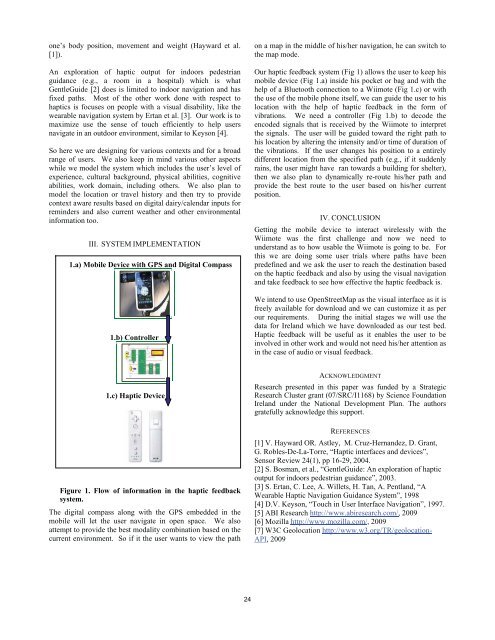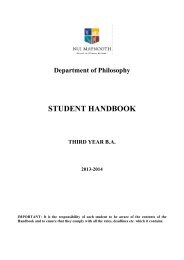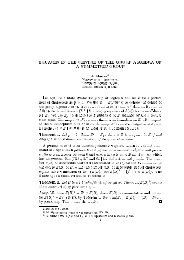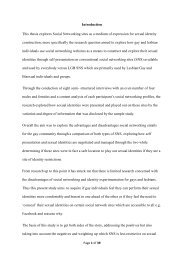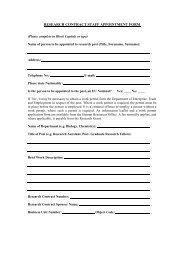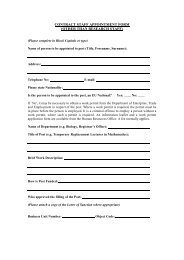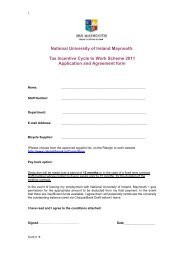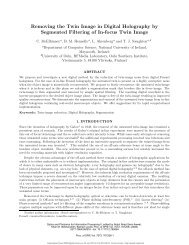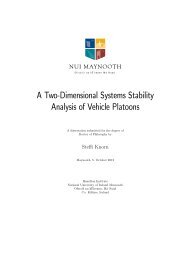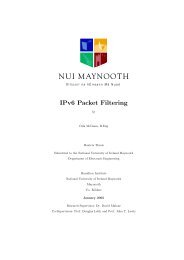CIICT 2009 Proceedings
CIICT 2009 Proceedings
CIICT 2009 Proceedings
- No tags were found...
You also want an ePaper? Increase the reach of your titles
YUMPU automatically turns print PDFs into web optimized ePapers that Google loves.
one’s body position, movement and weight (Hayward et al.[1]).An exploration of haptic output for indoors pedestrianguidance (e.g., a room in a hospital) which is whatGentleGuide [2] does is limited to indoor navigation and hasfixed paths. Most of the other work done with respect tohaptics is focuses on people with a visual disability, like thewearable navigation system by Ertan et al. [3]. Our work is tomaximize use the sense of touch efficiently to help usersnavigate in an outdoor environment, similar to Keyson [4].So here we are designing for various contexts and for a broadrange of users. We also keep in mind various other aspectswhile we model the system which includes the user’s level ofexperience, cultural background, physical abilities, cognitiveabilities, work domain, including others. We also plan tomodel the location or travel history and then try to providecontext aware results based on digital dairy/calendar inputs forreminders and also current weather and other environmentalinformation too.III. SYSTEM IMPLEMENTATION1.a) Mobile Device with GPS and Digital Compass1.b) Controlleron a map in the middle of his/her navigation, he can switch tothe map mode.Our haptic feedback system (Fig 1) allows the user to keep hismobile device (Fig 1.a) inside his pocket or bag and with thehelp of a Bluetooth connection to a Wiimote (Fig 1.c) or withthe use of the mobile phone itself, we can guide the user to hislocation with the help of haptic feedback in the form ofvibrations. We need a controller (Fig 1.b) to decode theencoded signals that is received by the Wiimote to interpretthe signals. The user will be guided toward the right path tohis location by altering the intensity and/or time of duration ofthe vibrations. If the user changes his position to a entirelydifferent location from the specified path (e.g., if it suddenlyrains, the user might have ran towards a building for shelter),then we also plan to dynamically re-route his/her path andprovide the best route to the user based on his/her currentposition.IV. CONCLUSIONGetting the mobile device to interact wirelessly with theWiimote was the first challenge and now we need tounderstand as to how usable the Wiimote is going to be. Forthis we are doing some user trials where paths have beenpredefined and we ask the user to reach the destination basedon the haptic feedback and also by using the visual navigationand take feedback to see how effective the haptic feedback is.We intend to use OpenStreetMap as the visual interface as it isfreely available for download and we can customize it as perour requirements. During the initial stages we will use thedata for Ireland which we have downloaded as our test bed.Haptic feedback will be useful as it enables the user to beinvolved in other work and would not need his/her attention asin the case of audio or visual feedback.1.c) Haptic DeviceFigure 1. Flow of information in the haptic feedbacksystem.The digital compass along with the GPS embedded in themobile will let the user navigate in open space. We alsoattempt to provide the best modality combination based on thecurrent environment. So if it the user wants to view the pathACKNOWLEDGMENTResearch presented in this paper was funded by a StrategicResearch Cluster grant (07/SRC/I1168) by Science FoundationIreland under the National Development Plan. The authorsgratefully acknowledge this support.REFERENCES[1] V. Hayward OR. Astley, M. Cruz-Hernandez, D. Grant,G. Robles-De-La-Torre, “Haptic interfaces and devices”,Sensor Review 24(1), pp 16-29, 2004.[2] S. Bosman, et al., “GentleGuide: An exploration of hapticoutput for indoors pedestrian guidance”, 2003.[3] S. Ertan, C. Lee, A. Willets, H. Tan, A. Pentland, “AWearable Haptic Navigation Guidance System”, 1998[4] D.V. Keyson, “Touch in User Interface Navigation”, 1997.[5] ABI Research http://www.abiresearch.com/, <strong>2009</strong>[6] Mozilla http://www.mozilla.com/, <strong>2009</strong>[7] W3C Geolocation http://www.w3.org/TR/geolocation-API, <strong>2009</strong>24


